-
EXECUTIVE SUMMARY
-
Market Overview
-
Key Findings
-
Market Segmentation
-
Competitive Landscape
-
Challenges and Opportunities
-
Future Outlook
-
MARKET INTRODUCTION
-
Definition
-
Scope of the study
- Research Objective
- Assumption
- Limitations
-
RESEARCH METHODOLOGY
-
Overview
-
Data Mining
-
Secondary Research
-
Primary Research
- Primary Interviews and Information Gathering Process
- Breakdown of Primary Respondents
-
Forecasting Model
-
Market Size Estimation
- Bottom-Up Approach
- Top-Down Approach
-
Data Triangulation
-
Validation
-
MARKET DYNAMICS
-
Overview
-
Drivers
-
Restraints
-
Opportunities
-
MARKET FACTOR ANALYSIS
-
Value chain Analysis
-
Porter's Five Forces Analysis
- Bargaining Power of Suppliers
- Bargaining Power of Buyers
- Threat of New Entrants
- Threat of Substitutes
- Intensity of Rivalry
-
COVID-19 Impact Analysis
- Market Impact Analysis
- Regional Impact
- Opportunity and Threat Analysis
-
CELL CULTURE MEDIA MARKET, BY TYPE (USD BILLION)
-
Basal Media
-
Supplemented Media
-
Serum-Free Media
-
Defined Media
-
CELL CULTURE MEDIA MARKET, BY APPLICATION (USD BILLION)
-
Biopharmaceutical Production
-
Tissue Engineering
-
Regenerative Medicine
-
Cancer Research
-
CELL CULTURE MEDIA MARKET, BY END USE (USD BILLION)
-
Academic Research
-
Pharmaceutical Companies
-
Biotechnology Companies
-
CROs
-
CELL CULTURE MEDIA MARKET, BY FORMULATION (USD BILLION)
-
Liquid Media
-
Powder Media
-
CELL CULTURE MEDIA MARKET, BY REGIONAL (USD BILLION)
-
North America
- US
- Canada
-
Europe
- Germany
- UK
- France
- Russia
- Italy
- Spain
- Rest of Europe
-
APAC
- China
- India
- Japan
- South Korea
- Malaysia
- Thailand
- Indonesia
- Rest of APAC
-
South America
- Brazil
- Mexico
- Argentina
- Rest of South America
-
MEA
- GCC Countries
- South Africa
- Rest of MEA
-
COMPETITIVE LANDSCAPE
-
Overview
-
Competitive Analysis
-
Market share Analysis
-
Major Growth Strategy in the Cell Culture Media Market
-
Competitive Benchmarking
-
Leading Players in Terms of Number of Developments in the Cell Culture Media Market
-
Key developments and growth strategies
- New Product Launch/Service Deployment
- Merger & Acquisitions
- Joint Ventures
-
Major Players Financial Matrix
- Sales and Operating Income
- Major Players R&D Expenditure. 2023
-
COMPANY PROFILES
-
Thermo Fisher Scientific
- Financial Overview
- Products Offered
- Key Developments
- SWOT Analysis
- Key Strategies
-
BD Biosciences
- Financial Overview
- Products Offered
- Key Developments
- SWOT Analysis
- Key Strategies
-
1000 Genomes Project
- Financial Overview
- Products Offered
- Key Developments
- SWOT Analysis
- Key Strategies
-
Roche
- Financial Overview
- Products Offered
- Key Developments
- SWOT Analysis
- Key Strategies
-
Merck KGaA
- Financial Overview
- Products Offered
- Key Developments
- SWOT Analysis
- Key Strategies
-
GE Healthcare
- Financial Overview
- Products Offered
- Key Developments
- SWOT Analysis
- Key Strategies
-
Corning Incorporated
- Financial Overview
- Products Offered
- Key Developments
- SWOT Analysis
- Key Strategies
-
SigmaAldrich Corporation
- Financial Overview
- Products Offered
- Key Developments
- SWOT Analysis
- Key Strategies
-
Fisher Scientific
- Financial Overview
- Products Offered
- Key Developments
- SWOT Analysis
- Key Strategies
-
HighRes Biosolutions
- Financial Overview
- Products Offered
- Key Developments
- SWOT Analysis
- Key Strategies
-
Cell Culture Company
- Financial Overview
- Products Offered
- Key Developments
- SWOT Analysis
- Key Strategies
-
Promega Corporation
- Financial Overview
- Products Offered
- Key Developments
- SWOT Analysis
- Key Strategies
-
RPMI
- Financial Overview
- Products Offered
- Key Developments
- SWOT Analysis
- Key Strategies
-
Lonza Group
- Financial Overview
- Products Offered
- Key Developments
- SWOT Analysis
- Key Strategies
-
Hyclone
- Financial Overview
- Products Offered
- Key Developments
- SWOT Analysis
- Key Strategies
-
APPENDIX
-
References
-
Related Reports
-
LIST OF TABLES
-
LIST OF ASSUMPTIONS
-
NORTH AMERICA CELL CULTURE MEDIA MARKET SIZE ESTIMATES & FORECAST, BY TYPE, 2019-2035 (USD BILLIONS)
-
NORTH AMERICA CELL CULTURE MEDIA MARKET SIZE ESTIMATES & FORECAST, BY APPLICATION, 2019-2035 (USD BILLIONS)
-
NORTH AMERICA CELL CULTURE MEDIA MARKET SIZE ESTIMATES & FORECAST, BY END USE, 2019-2035 (USD BILLIONS)
-
NORTH AMERICA CELL CULTURE MEDIA MARKET SIZE ESTIMATES & FORECAST, BY FORMULATION, 2019-2035 (USD BILLIONS)
-
NORTH AMERICA CELL CULTURE MEDIA MARKET SIZE ESTIMATES & FORECAST, BY REGIONAL, 2019-2035 (USD BILLIONS)
-
US CELL CULTURE MEDIA MARKET SIZE ESTIMATES & FORECAST, BY TYPE, 2019-2035 (USD BILLIONS)
-
US CELL CULTURE MEDIA MARKET SIZE ESTIMATES & FORECAST, BY APPLICATION, 2019-2035 (USD BILLIONS)
-
US CELL CULTURE MEDIA MARKET SIZE ESTIMATES & FORECAST, BY END USE, 2019-2035 (USD BILLIONS)
-
US CELL CULTURE MEDIA MARKET SIZE ESTIMATES & FORECAST, BY FORMULATION, 2019-2035 (USD BILLIONS)
-
US CELL CULTURE MEDIA MARKET SIZE ESTIMATES & FORECAST, BY REGIONAL, 2019-2035 (USD BILLIONS)
-
CANADA CELL CULTURE MEDIA MARKET SIZE ESTIMATES & FORECAST, BY TYPE, 2019-2035 (USD BILLIONS)
-
CANADA CELL CULTURE MEDIA MARKET SIZE ESTIMATES & FORECAST, BY APPLICATION, 2019-2035 (USD BILLIONS)
-
CANADA CELL CULTURE MEDIA MARKET SIZE ESTIMATES & FORECAST, BY END USE, 2019-2035 (USD BILLIONS)
-
CANADA CELL CULTURE MEDIA MARKET SIZE ESTIMATES & FORECAST, BY FORMULATION, 2019-2035 (USD BILLIONS)
-
CANADA CELL CULTURE MEDIA MARKET SIZE ESTIMATES & FORECAST, BY REGIONAL, 2019-2035 (USD BILLIONS)
-
EUROPE CELL CULTURE MEDIA MARKET SIZE ESTIMATES & FORECAST, BY TYPE, 2019-2035 (USD BILLIONS)
-
EUROPE CELL CULTURE MEDIA MARKET SIZE ESTIMATES & FORECAST, BY APPLICATION, 2019-2035 (USD BILLIONS)
-
EUROPE CELL CULTURE MEDIA MARKET SIZE ESTIMATES & FORECAST, BY END USE, 2019-2035 (USD BILLIONS)
-
EUROPE CELL CULTURE MEDIA MARKET SIZE ESTIMATES & FORECAST, BY FORMULATION, 2019-2035 (USD BILLIONS)
-
EUROPE CELL CULTURE MEDIA MARKET SIZE ESTIMATES & FORECAST, BY REGIONAL, 2019-2035 (USD BILLIONS)
-
GERMANY CELL CULTURE MEDIA MARKET SIZE ESTIMATES & FORECAST, BY TYPE, 2019-2035 (USD BILLIONS)
-
GERMANY CELL CULTURE MEDIA MARKET SIZE ESTIMATES & FORECAST, BY APPLICATION, 2019-2035 (USD BILLIONS)
-
GERMANY CELL CULTURE MEDIA MARKET SIZE ESTIMATES & FORECAST, BY END USE, 2019-2035 (USD BILLIONS)
-
GERMANY CELL CULTURE MEDIA MARKET SIZE ESTIMATES & FORECAST, BY FORMULATION, 2019-2035 (USD BILLIONS)
-
GERMANY CELL CULTURE MEDIA MARKET SIZE ESTIMATES & FORECAST, BY REGIONAL, 2019-2035 (USD BILLIONS)
-
UK CELL CULTURE MEDIA MARKET SIZE ESTIMATES & FORECAST, BY TYPE, 2019-2035 (USD BILLIONS)
-
UK CELL CULTURE MEDIA MARKET SIZE ESTIMATES & FORECAST, BY APPLICATION, 2019-2035 (USD BILLIONS)
-
UK CELL CULTURE MEDIA MARKET SIZE ESTIMATES & FORECAST, BY END USE, 2019-2035 (USD BILLIONS)
-
UK CELL CULTURE MEDIA MARKET SIZE ESTIMATES & FORECAST, BY FORMULATION, 2019-2035 (USD BILLIONS)
-
UK CELL CULTURE MEDIA MARKET SIZE ESTIMATES & FORECAST, BY REGIONAL, 2019-2035 (USD BILLIONS)
-
FRANCE CELL CULTURE MEDIA MARKET SIZE ESTIMATES & FORECAST, BY TYPE, 2019-2035 (USD BILLIONS)
-
FRANCE CELL CULTURE MEDIA MARKET SIZE ESTIMATES & FORECAST, BY APPLICATION, 2019-2035 (USD BILLIONS)
-
FRANCE CELL CULTURE MEDIA MARKET SIZE ESTIMATES & FORECAST, BY END USE, 2019-2035 (USD BILLIONS)
-
FRANCE CELL CULTURE MEDIA MARKET SIZE ESTIMATES & FORECAST, BY FORMULATION, 2019-2035 (USD BILLIONS)
-
FRANCE CELL CULTURE MEDIA MARKET SIZE ESTIMATES & FORECAST, BY REGIONAL, 2019-2035 (USD BILLIONS)
-
RUSSIA CELL CULTURE MEDIA MARKET SIZE ESTIMATES & FORECAST, BY TYPE, 2019-2035 (USD BILLIONS)
-
RUSSIA CELL CULTURE MEDIA MARKET SIZE ESTIMATES & FORECAST, BY APPLICATION, 2019-2035 (USD BILLIONS)
-
RUSSIA CELL CULTURE MEDIA MARKET SIZE ESTIMATES & FORECAST, BY END USE, 2019-2035 (USD BILLIONS)
-
RUSSIA CELL CULTURE MEDIA MARKET SIZE ESTIMATES & FORECAST, BY FORMULATION, 2019-2035 (USD BILLIONS)
-
RUSSIA CELL CULTURE MEDIA MARKET SIZE ESTIMATES & FORECAST, BY REGIONAL, 2019-2035 (USD BILLIONS)
-
ITALY CELL CULTURE MEDIA MARKET SIZE ESTIMATES & FORECAST, BY TYPE, 2019-2035 (USD BILLIONS)
-
ITALY CELL CULTURE MEDIA MARKET SIZE ESTIMATES & FORECAST, BY APPLICATION, 2019-2035 (USD BILLIONS)
-
ITALY CELL CULTURE MEDIA MARKET SIZE ESTIMATES & FORECAST, BY END USE, 2019-2035 (USD BILLIONS)
-
ITALY CELL CULTURE MEDIA MARKET SIZE ESTIMATES & FORECAST, BY FORMULATION, 2019-2035 (USD BILLIONS)
-
ITALY CELL CULTURE MEDIA MARKET SIZE ESTIMATES & FORECAST, BY REGIONAL, 2019-2035 (USD BILLIONS)
-
SPAIN CELL CULTURE MEDIA MARKET SIZE ESTIMATES & FORECAST, BY TYPE, 2019-2035 (USD BILLIONS)
-
SPAIN CELL CULTURE MEDIA MARKET SIZE ESTIMATES & FORECAST, BY APPLICATION, 2019-2035 (USD BILLIONS)
-
SPAIN CELL CULTURE MEDIA MARKET SIZE ESTIMATES & FORECAST, BY END USE, 2019-2035 (USD BILLIONS)
-
SPAIN CELL CULTURE MEDIA MARKET SIZE ESTIMATES & FORECAST, BY FORMULATION, 2019-2035 (USD BILLIONS)
-
SPAIN CELL CULTURE MEDIA MARKET SIZE ESTIMATES & FORECAST, BY REGIONAL, 2019-2035 (USD BILLIONS)
-
REST OF EUROPE CELL CULTURE MEDIA MARKET SIZE ESTIMATES & FORECAST, BY TYPE, 2019-2035 (USD BILLIONS)
-
REST OF EUROPE CELL CULTURE MEDIA MARKET SIZE ESTIMATES & FORECAST, BY APPLICATION, 2019-2035 (USD BILLIONS)
-
REST OF EUROPE CELL CULTURE MEDIA MARKET SIZE ESTIMATES & FORECAST, BY END USE, 2019-2035 (USD BILLIONS)
-
REST OF EUROPE CELL CULTURE MEDIA MARKET SIZE ESTIMATES & FORECAST, BY FORMULATION, 2019-2035 (USD BILLIONS)
-
REST OF EUROPE CELL CULTURE MEDIA MARKET SIZE ESTIMATES & FORECAST, BY REGIONAL, 2019-2035 (USD BILLIONS)
-
APAC CELL CULTURE MEDIA MARKET SIZE ESTIMATES & FORECAST, BY TYPE, 2019-2035 (USD BILLIONS)
-
APAC CELL CULTURE MEDIA MARKET SIZE ESTIMATES & FORECAST, BY APPLICATION, 2019-2035 (USD BILLIONS)
-
APAC CELL CULTURE MEDIA MARKET SIZE ESTIMATES & FORECAST, BY END USE, 2019-2035 (USD BILLIONS)
-
APAC CELL CULTURE MEDIA MARKET SIZE ESTIMATES & FORECAST, BY FORMULATION, 2019-2035 (USD BILLIONS)
-
APAC CELL CULTURE MEDIA MARKET SIZE ESTIMATES & FORECAST, BY REGIONAL, 2019-2035 (USD BILLIONS)
-
CHINA CELL CULTURE MEDIA MARKET SIZE ESTIMATES & FORECAST, BY TYPE, 2019-2035 (USD BILLIONS)
-
CHINA CELL CULTURE MEDIA MARKET SIZE ESTIMATES & FORECAST, BY APPLICATION, 2019-2035 (USD BILLIONS)
-
CHINA CELL CULTURE MEDIA MARKET SIZE ESTIMATES & FORECAST, BY END USE, 2019-2035 (USD BILLIONS)
-
CHINA CELL CULTURE MEDIA MARKET SIZE ESTIMATES & FORECAST, BY FORMULATION, 2019-2035 (USD BILLIONS)
-
CHINA CELL CULTURE MEDIA MARKET SIZE ESTIMATES & FORECAST, BY REGIONAL, 2019-2035 (USD BILLIONS)
-
INDIA CELL CULTURE MEDIA MARKET SIZE ESTIMATES & FORECAST, BY TYPE, 2019-2035 (USD BILLIONS)
-
INDIA CELL CULTURE MEDIA MARKET SIZE ESTIMATES & FORECAST, BY APPLICATION, 2019-2035 (USD BILLIONS)
-
INDIA CELL CULTURE MEDIA MARKET SIZE ESTIMATES & FORECAST, BY END USE, 2019-2035 (USD BILLIONS)
-
INDIA CELL CULTURE MEDIA MARKET SIZE ESTIMATES & FORECAST, BY FORMULATION, 2019-2035 (USD BILLIONS)
-
INDIA CELL CULTURE MEDIA MARKET SIZE ESTIMATES & FORECAST, BY REGIONAL, 2019-2035 (USD BILLIONS)
-
JAPAN CELL CULTURE MEDIA MARKET SIZE ESTIMATES & FORECAST, BY TYPE, 2019-2035 (USD BILLIONS)
-
JAPAN CELL CULTURE MEDIA MARKET SIZE ESTIMATES & FORECAST, BY APPLICATION, 2019-2035 (USD BILLIONS)
-
JAPAN CELL CULTURE MEDIA MARKET SIZE ESTIMATES & FORECAST, BY END USE, 2019-2035 (USD BILLIONS)
-
JAPAN CELL CULTURE MEDIA MARKET SIZE ESTIMATES & FORECAST, BY FORMULATION, 2019-2035 (USD BILLIONS)
-
JAPAN CELL CULTURE MEDIA MARKET SIZE ESTIMATES & FORECAST, BY REGIONAL, 2019-2035 (USD BILLIONS)
-
SOUTH KOREA CELL CULTURE MEDIA MARKET SIZE ESTIMATES & FORECAST, BY TYPE, 2019-2035 (USD BILLIONS)
-
SOUTH KOREA CELL CULTURE MEDIA MARKET SIZE ESTIMATES & FORECAST, BY APPLICATION, 2019-2035 (USD BILLIONS)
-
SOUTH KOREA CELL CULTURE MEDIA MARKET SIZE ESTIMATES & FORECAST, BY END USE, 2019-2035 (USD BILLIONS)
-
SOUTH KOREA CELL CULTURE MEDIA MARKET SIZE ESTIMATES & FORECAST, BY FORMULATION, 2019-2035 (USD BILLIONS)
-
SOUTH KOREA CELL CULTURE MEDIA MARKET SIZE ESTIMATES & FORECAST, BY REGIONAL, 2019-2035 (USD BILLIONS)
-
MALAYSIA CELL CULTURE MEDIA MARKET SIZE ESTIMATES & FORECAST, BY TYPE, 2019-2035 (USD BILLIONS)
-
MALAYSIA CELL CULTURE MEDIA MARKET SIZE ESTIMATES & FORECAST, BY APPLICATION, 2019-2035 (USD BILLIONS)
-
MALAYSIA CELL CULTURE MEDIA MARKET SIZE ESTIMATES & FORECAST, BY END USE, 2019-2035 (USD BILLIONS)
-
MALAYSIA CELL CULTURE MEDIA MARKET SIZE ESTIMATES & FORECAST, BY FORMULATION, 2019-2035 (USD BILLIONS)
-
MALAYSIA CELL CULTURE MEDIA MARKET SIZE ESTIMATES & FORECAST, BY REGIONAL, 2019-2035 (USD BILLIONS)
-
THAILAND CELL CULTURE MEDIA MARKET SIZE ESTIMATES & FORECAST, BY TYPE, 2019-2035 (USD BILLIONS)
-
THAILAND CELL CULTURE MEDIA MARKET SIZE ESTIMATES & FORECAST, BY APPLICATION, 2019-2035 (USD BILLIONS)
-
THAILAND CELL CULTURE MEDIA MARKET SIZE ESTIMATES & FORECAST, BY END USE, 2019-2035 (USD BILLIONS)
-
THAILAND CELL CULTURE MEDIA MARKET SIZE ESTIMATES & FORECAST, BY FORMULATION, 2019-2035 (USD BILLIONS)
-
THAILAND CELL CULTURE MEDIA MARKET SIZE ESTIMATES & FORECAST, BY REGIONAL, 2019-2035 (USD BILLIONS)
-
INDONESIA CELL CULTURE MEDIA MARKET SIZE ESTIMATES & FORECAST, BY TYPE, 2019-2035 (USD BILLIONS)
-
INDONESIA CELL CULTURE MEDIA MARKET SIZE ESTIMATES & FORECAST, BY APPLICATION, 2019-2035 (USD BILLIONS)
-
INDONESIA CELL CULTURE MEDIA MARKET SIZE ESTIMATES & FORECAST, BY END USE, 2019-2035 (USD BILLIONS)
-
INDONESIA CELL CULTURE MEDIA MARKET SIZE ESTIMATES & FORECAST, BY FORMULATION, 2019-2035 (USD BILLIONS)
-
INDONESIA CELL CULTURE MEDIA MARKET SIZE ESTIMATES & FORECAST, BY REGIONAL, 2019-2035 (USD BILLIONS)
-
REST OF APAC CELL CULTURE MEDIA MARKET SIZE ESTIMATES & FORECAST, BY TYPE, 2019-2035 (USD BILLIONS)
-
REST OF APAC CELL CULTURE MEDIA MARKET SIZE ESTIMATES & FORECAST, BY APPLICATION, 2019-2035 (USD BILLIONS)
-
REST OF APAC CELL CULTURE MEDIA MARKET SIZE ESTIMATES & FORECAST, BY END USE, 2019-2035 (USD BILLIONS)
-
REST OF APAC CELL CULTURE MEDIA MARKET SIZE ESTIMATES & FORECAST, BY FORMULATION, 2019-2035 (USD BILLIONS)
-
REST OF APAC CELL CULTURE MEDIA MARKET SIZE ESTIMATES & FORECAST, BY REGIONAL, 2019-2035 (USD BILLIONS)
-
SOUTH AMERICA CELL CULTURE MEDIA MARKET SIZE ESTIMATES & FORECAST, BY TYPE, 2019-2035 (USD BILLIONS)
-
SOUTH AMERICA CELL CULTURE MEDIA MARKET SIZE ESTIMATES & FORECAST, BY APPLICATION, 2019-2035 (USD BILLIONS)
-
SOUTH AMERICA CELL CULTURE MEDIA MARKET SIZE ESTIMATES & FORECAST, BY END USE, 2019-2035 (USD BILLIONS)
-
SOUTH AMERICA CELL CULTURE MEDIA MARKET SIZE ESTIMATES & FORECAST, BY FORMULATION, 2019-2035 (USD BILLIONS)
-
SOUTH AMERICA CELL CULTURE MEDIA MARKET SIZE ESTIMATES & FORECAST, BY REGIONAL, 2019-2035 (USD BILLIONS)
-
BRAZIL CELL CULTURE MEDIA MARKET SIZE ESTIMATES & FORECAST, BY TYPE, 2019-2035 (USD BILLIONS)
-
BRAZIL CELL CULTURE MEDIA MARKET SIZE ESTIMATES & FORECAST, BY APPLICATION, 2019-2035 (USD BILLIONS)
-
BRAZIL CELL CULTURE MEDIA MARKET SIZE ESTIMATES & FORECAST, BY END USE, 2019-2035 (USD BILLIONS)
-
BRAZIL CELL CULTURE MEDIA MARKET SIZE ESTIMATES & FORECAST, BY FORMULATION, 2019-2035 (USD BILLIONS)
-
BRAZIL CELL CULTURE MEDIA MARKET SIZE ESTIMATES & FORECAST, BY REGIONAL, 2019-2035 (USD BILLIONS)
-
MEXICO CELL CULTURE MEDIA MARKET SIZE ESTIMATES & FORECAST, BY TYPE, 2019-2035 (USD BILLIONS)
-
MEXICO CELL CULTURE MEDIA MARKET SIZE ESTIMATES & FORECAST, BY APPLICATION, 2019-2035 (USD BILLIONS)
-
MEXICO CELL CULTURE MEDIA MARKET SIZE ESTIMATES & FORECAST, BY END USE, 2019-2035 (USD BILLIONS)
-
MEXICO CELL CULTURE MEDIA MARKET SIZE ESTIMATES & FORECAST, BY FORMULATION, 2019-2035 (USD BILLIONS)
-
MEXICO CELL CULTURE MEDIA MARKET SIZE ESTIMATES & FORECAST, BY REGIONAL, 2019-2035 (USD BILLIONS)
-
ARGENTINA CELL CULTURE MEDIA MARKET SIZE ESTIMATES & FORECAST, BY TYPE, 2019-2035 (USD BILLIONS)
-
ARGENTINA CELL CULTURE MEDIA MARKET SIZE ESTIMATES & FORECAST, BY APPLICATION, 2019-2035 (USD BILLIONS)
-
ARGENTINA CELL CULTURE MEDIA MARKET SIZE ESTIMATES & FORECAST, BY END USE, 2019-2035 (USD BILLIONS)
-
ARGENTINA CELL CULTURE MEDIA MARKET SIZE ESTIMATES & FORECAST, BY FORMULATION, 2019-2035 (USD BILLIONS)
-
ARGENTINA CELL CULTURE MEDIA MARKET SIZE ESTIMATES & FORECAST, BY REGIONAL, 2019-2035 (USD BILLIONS)
-
REST OF SOUTH AMERICA CELL CULTURE MEDIA MARKET SIZE ESTIMATES & FORECAST, BY TYPE, 2019-2035 (USD BILLIONS)
-
REST OF SOUTH AMERICA CELL CULTURE MEDIA MARKET SIZE ESTIMATES & FORECAST, BY APPLICATION, 2019-2035 (USD BILLIONS)
-
REST OF SOUTH AMERICA CELL CULTURE MEDIA MARKET SIZE ESTIMATES & FORECAST, BY END USE, 2019-2035 (USD BILLIONS)
-
REST OF SOUTH AMERICA CELL CULTURE MEDIA MARKET SIZE ESTIMATES & FORECAST, BY FORMULATION, 2019-2035 (USD BILLIONS)
-
REST OF SOUTH AMERICA CELL CULTURE MEDIA MARKET SIZE ESTIMATES & FORECAST, BY REGIONAL, 2019-2035 (USD BILLIONS)
-
MEA CELL CULTURE MEDIA MARKET SIZE ESTIMATES & FORECAST, BY TYPE, 2019-2035 (USD BILLIONS)
-
MEA CELL CULTURE MEDIA MARKET SIZE ESTIMATES & FORECAST, BY APPLICATION, 2019-2035 (USD BILLIONS)
-
MEA CELL CULTURE MEDIA MARKET SIZE ESTIMATES & FORECAST, BY END USE, 2019-2035 (USD BILLIONS)
-
MEA CELL CULTURE MEDIA MARKET SIZE ESTIMATES & FORECAST, BY FORMULATION, 2019-2035 (USD BILLIONS)
-
MEA CELL CULTURE MEDIA MARKET SIZE ESTIMATES & FORECAST, BY REGIONAL, 2019-2035 (USD BILLIONS)
-
GCC COUNTRIES CELL CULTURE MEDIA MARKET SIZE ESTIMATES & FORECAST, BY TYPE, 2019-2035 (USD BILLIONS)
-
GCC COUNTRIES CELL CULTURE MEDIA MARKET SIZE ESTIMATES & FORECAST, BY APPLICATION, 2019-2035 (USD BILLIONS)
-
GCC COUNTRIES CELL CULTURE MEDIA MARKET SIZE ESTIMATES & FORECAST, BY END USE, 2019-2035 (USD BILLIONS)
-
GCC COUNTRIES CELL CULTURE MEDIA MARKET SIZE ESTIMATES & FORECAST, BY FORMULATION, 2019-2035 (USD BILLIONS)
-
GCC COUNTRIES CELL CULTURE MEDIA MARKET SIZE ESTIMATES & FORECAST, BY REGIONAL, 2019-2035 (USD BILLIONS)
-
SOUTH AFRICA CELL CULTURE MEDIA MARKET SIZE ESTIMATES & FORECAST, BY TYPE, 2019-2035 (USD BILLIONS)
-
SOUTH AFRICA CELL CULTURE MEDIA MARKET SIZE ESTIMATES & FORECAST, BY APPLICATION, 2019-2035 (USD BILLIONS)
-
SOUTH AFRICA CELL CULTURE MEDIA MARKET SIZE ESTIMATES & FORECAST, BY END USE, 2019-2035 (USD BILLIONS)
-
SOUTH AFRICA CELL CULTURE MEDIA MARKET SIZE ESTIMATES & FORECAST, BY FORMULATION, 2019-2035 (USD BILLIONS)
-
SOUTH AFRICA CELL CULTURE MEDIA MARKET SIZE ESTIMATES & FORECAST, BY REGIONAL, 2019-2035 (USD BILLIONS)
-
REST OF MEA CELL CULTURE MEDIA MARKET SIZE ESTIMATES & FORECAST, BY TYPE, 2019-2035 (USD BILLIONS)
-
REST OF MEA CELL CULTURE MEDIA MARKET SIZE ESTIMATES & FORECAST, BY APPLICATION, 2019-2035 (USD BILLIONS)
-
REST OF MEA CELL CULTURE MEDIA MARKET SIZE ESTIMATES & FORECAST, BY END USE, 2019-2035 (USD BILLIONS)
-
REST OF MEA CELL CULTURE MEDIA MARKET SIZE ESTIMATES & FORECAST, BY FORMULATION, 2019-2035 (USD BILLIONS)
-
REST OF MEA CELL CULTURE MEDIA MARKET SIZE ESTIMATES & FORECAST, BY REGIONAL, 2019-2035 (USD BILLIONS)
-
PRODUCT LAUNCH/PRODUCT DEVELOPMENT/APPROVAL
-
ACQUISITION/PARTNERSHIP
-
LIST OF FIGURES
-
MARKET SYNOPSIS
-
NORTH AMERICA CELL CULTURE MEDIA MARKET ANALYSIS
-
US CELL CULTURE MEDIA MARKET ANALYSIS BY TYPE
-
US CELL CULTURE MEDIA MARKET ANALYSIS BY APPLICATION
-
US CELL CULTURE MEDIA MARKET ANALYSIS BY END USE
-
US CELL CULTURE MEDIA MARKET ANALYSIS BY FORMULATION
-
US CELL CULTURE MEDIA MARKET ANALYSIS BY REGIONAL
-
CANADA CELL CULTURE MEDIA MARKET ANALYSIS BY TYPE
-
CANADA CELL CULTURE MEDIA MARKET ANALYSIS BY APPLICATION
-
CANADA CELL CULTURE MEDIA MARKET ANALYSIS BY END USE
-
CANADA CELL CULTURE MEDIA MARKET ANALYSIS BY FORMULATION
-
CANADA CELL CULTURE MEDIA MARKET ANALYSIS BY REGIONAL
-
EUROPE CELL CULTURE MEDIA MARKET ANALYSIS
-
GERMANY CELL CULTURE MEDIA MARKET ANALYSIS BY TYPE
-
GERMANY CELL CULTURE MEDIA MARKET ANALYSIS BY APPLICATION
-
GERMANY CELL CULTURE MEDIA MARKET ANALYSIS BY END USE
-
GERMANY CELL CULTURE MEDIA MARKET ANALYSIS BY FORMULATION
-
GERMANY CELL CULTURE MEDIA MARKET ANALYSIS BY REGIONAL
-
UK CELL CULTURE MEDIA MARKET ANALYSIS BY TYPE
-
UK CELL CULTURE MEDIA MARKET ANALYSIS BY APPLICATION
-
UK CELL CULTURE MEDIA MARKET ANALYSIS BY END USE
-
UK CELL CULTURE MEDIA MARKET ANALYSIS BY FORMULATION
-
UK CELL CULTURE MEDIA MARKET ANALYSIS BY REGIONAL
-
FRANCE CELL CULTURE MEDIA MARKET ANALYSIS BY TYPE
-
FRANCE CELL CULTURE MEDIA MARKET ANALYSIS BY APPLICATION
-
FRANCE CELL CULTURE MEDIA MARKET ANALYSIS BY END USE
-
FRANCE CELL CULTURE MEDIA MARKET ANALYSIS BY FORMULATION
-
FRANCE CELL CULTURE MEDIA MARKET ANALYSIS BY REGIONAL
-
RUSSIA CELL CULTURE MEDIA MARKET ANALYSIS BY TYPE
-
RUSSIA CELL CULTURE MEDIA MARKET ANALYSIS BY APPLICATION
-
RUSSIA CELL CULTURE MEDIA MARKET ANALYSIS BY END USE
-
RUSSIA CELL CULTURE MEDIA MARKET ANALYSIS BY FORMULATION
-
RUSSIA CELL CULTURE MEDIA MARKET ANALYSIS BY REGIONAL
-
ITALY CELL CULTURE MEDIA MARKET ANALYSIS BY TYPE
-
ITALY CELL CULTURE MEDIA MARKET ANALYSIS BY APPLICATION
-
ITALY CELL CULTURE MEDIA MARKET ANALYSIS BY END USE
-
ITALY CELL CULTURE MEDIA MARKET ANALYSIS BY FORMULATION
-
ITALY CELL CULTURE MEDIA MARKET ANALYSIS BY REGIONAL
-
SPAIN CELL CULTURE MEDIA MARKET ANALYSIS BY TYPE
-
SPAIN CELL CULTURE MEDIA MARKET ANALYSIS BY APPLICATION
-
SPAIN CELL CULTURE MEDIA MARKET ANALYSIS BY END USE
-
SPAIN CELL CULTURE MEDIA MARKET ANALYSIS BY FORMULATION
-
SPAIN CELL CULTURE MEDIA MARKET ANALYSIS BY REGIONAL
-
REST OF EUROPE CELL CULTURE MEDIA MARKET ANALYSIS BY TYPE
-
REST OF EUROPE CELL CULTURE MEDIA MARKET ANALYSIS BY APPLICATION
-
REST OF EUROPE CELL CULTURE MEDIA MARKET ANALYSIS BY END USE
-
REST OF EUROPE CELL CULTURE MEDIA MARKET ANALYSIS BY FORMULATION
-
REST OF EUROPE CELL CULTURE MEDIA MARKET ANALYSIS BY REGIONAL
-
APAC CELL CULTURE MEDIA MARKET ANALYSIS
-
CHINA CELL CULTURE MEDIA MARKET ANALYSIS BY TYPE
-
CHINA CELL CULTURE MEDIA MARKET ANALYSIS BY APPLICATION
-
CHINA CELL CULTURE MEDIA MARKET ANALYSIS BY END USE
-
CHINA CELL CULTURE MEDIA MARKET ANALYSIS BY FORMULATION
-
CHINA CELL CULTURE MEDIA MARKET ANALYSIS BY REGIONAL
-
INDIA CELL CULTURE MEDIA MARKET ANALYSIS BY TYPE
-
INDIA CELL CULTURE MEDIA MARKET ANALYSIS BY APPLICATION
-
INDIA CELL CULTURE MEDIA MARKET ANALYSIS BY END USE
-
INDIA CELL CULTURE MEDIA MARKET ANALYSIS BY FORMULATION
-
INDIA CELL CULTURE MEDIA MARKET ANALYSIS BY REGIONAL
-
JAPAN CELL CULTURE MEDIA MARKET ANALYSIS BY TYPE
-
JAPAN CELL CULTURE MEDIA MARKET ANALYSIS BY APPLICATION
-
JAPAN CELL CULTURE MEDIA MARKET ANALYSIS BY END USE
-
JAPAN CELL CULTURE MEDIA MARKET ANALYSIS BY FORMULATION
-
JAPAN CELL CULTURE MEDIA MARKET ANALYSIS BY REGIONAL
-
SOUTH KOREA CELL CULTURE MEDIA MARKET ANALYSIS BY TYPE
-
SOUTH KOREA CELL CULTURE MEDIA MARKET ANALYSIS BY APPLICATION
-
SOUTH KOREA CELL CULTURE MEDIA MARKET ANALYSIS BY END USE
-
SOUTH KOREA CELL CULTURE MEDIA MARKET ANALYSIS BY FORMULATION
-
SOUTH KOREA CELL CULTURE MEDIA MARKET ANALYSIS BY REGIONAL
-
MALAYSIA CELL CULTURE MEDIA MARKET ANALYSIS BY TYPE
-
MALAYSIA CELL CULTURE MEDIA MARKET ANALYSIS BY APPLICATION
-
MALAYSIA CELL CULTURE MEDIA MARKET ANALYSIS BY END USE
-
MALAYSIA CELL CULTURE MEDIA MARKET ANALYSIS BY FORMULATION
-
MALAYSIA CELL CULTURE MEDIA MARKET ANALYSIS BY REGIONAL
-
THAILAND CELL CULTURE MEDIA MARKET ANALYSIS BY TYPE
-
THAILAND CELL CULTURE MEDIA MARKET ANALYSIS BY APPLICATION
-
THAILAND CELL CULTURE MEDIA MARKET ANALYSIS BY END USE
-
THAILAND CELL CULTURE MEDIA MARKET ANALYSIS BY FORMULATION
-
THAILAND CELL CULTURE MEDIA MARKET ANALYSIS BY REGIONAL
-
INDONESIA CELL CULTURE MEDIA MARKET ANALYSIS BY TYPE
-
INDONESIA CELL CULTURE MEDIA MARKET ANALYSIS BY APPLICATION
-
INDONESIA CELL CULTURE MEDIA MARKET ANALYSIS BY END USE
-
INDONESIA CELL CULTURE MEDIA MARKET ANALYSIS BY FORMULATION
-
INDONESIA CELL CULTURE MEDIA MARKET ANALYSIS BY REGIONAL
-
REST OF APAC CELL CULTURE MEDIA MARKET ANALYSIS BY TYPE
-
REST OF APAC CELL CULTURE MEDIA MARKET ANALYSIS BY APPLICATION
-
REST OF APAC CELL CULTURE MEDIA MARKET ANALYSIS BY END USE
-
REST OF APAC CELL CULTURE MEDIA MARKET ANALYSIS BY FORMULATION
-
REST OF APAC CELL CULTURE MEDIA MARKET ANALYSIS BY REGIONAL
-
SOUTH AMERICA CELL CULTURE MEDIA MARKET ANALYSIS
-
BRAZIL CELL CULTURE MEDIA MARKET ANALYSIS BY TYPE
-
BRAZIL CELL CULTURE MEDIA MARKET ANALYSIS BY APPLICATION
-
BRAZIL CELL CULTURE MEDIA MARKET ANALYSIS BY END USE
-
BRAZIL CELL CULTURE MEDIA MARKET ANALYSIS BY FORMULATION
-
BRAZIL CELL CULTURE MEDIA MARKET ANALYSIS BY REGIONAL
-
MEXICO CELL CULTURE MEDIA MARKET ANALYSIS BY TYPE
-
MEXICO CELL CULTURE MEDIA MARKET ANALYSIS BY APPLICATION
-
MEXICO CELL CULTURE MEDIA MARKET ANALYSIS BY END USE
-
MEXICO CELL CULTURE MEDIA MARKET ANALYSIS BY FORMULATION
-
MEXICO CELL CULTURE MEDIA MARKET ANALYSIS BY REGIONAL
-
ARGENTINA CELL CULTURE MEDIA MARKET ANALYSIS BY TYPE
-
ARGENTINA CELL CULTURE MEDIA MARKET ANALYSIS BY APPLICATION
-
ARGENTINA CELL CULTURE MEDIA MARKET ANALYSIS BY END USE
-
ARGENTINA CELL CULTURE MEDIA MARKET ANALYSIS BY FORMULATION
-
ARGENTINA CELL CULTURE MEDIA MARKET ANALYSIS BY REGIONAL
-
REST OF SOUTH AMERICA CELL CULTURE MEDIA MARKET ANALYSIS BY TYPE
-
REST OF SOUTH AMERICA CELL CULTURE MEDIA MARKET ANALYSIS BY APPLICATION
-
REST OF SOUTH AMERICA CELL CULTURE MEDIA MARKET ANALYSIS BY END USE
-
REST OF SOUTH AMERICA CELL CULTURE MEDIA MARKET ANALYSIS BY FORMULATION
-
REST OF SOUTH AMERICA CELL CULTURE MEDIA MARKET ANALYSIS BY REGIONAL
-
MEA CELL CULTURE MEDIA MARKET ANALYSIS
-
GCC COUNTRIES CELL CULTURE MEDIA MARKET ANALYSIS BY TYPE
-
GCC COUNTRIES CELL CULTURE MEDIA MARKET ANALYSIS BY APPLICATION
-
GCC COUNTRIES CELL CULTURE MEDIA MARKET ANALYSIS BY END USE
-
GCC COUNTRIES CELL CULTURE MEDIA MARKET ANALYSIS BY FORMULATION
-
GCC COUNTRIES CELL CULTURE MEDIA MARKET ANALYSIS BY REGIONAL
-
SOUTH AFRICA CELL CULTURE MEDIA MARKET ANALYSIS BY TYPE
-
SOUTH AFRICA CELL CULTURE MEDIA MARKET ANALYSIS BY APPLICATION
-
SOUTH AFRICA CELL CULTURE MEDIA MARKET ANALYSIS BY END USE
-
SOUTH AFRICA CELL CULTURE MEDIA MARK
-
"
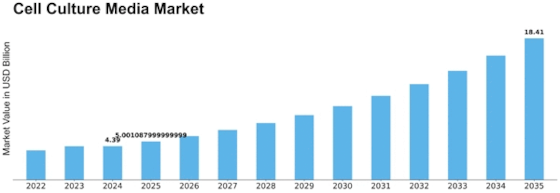

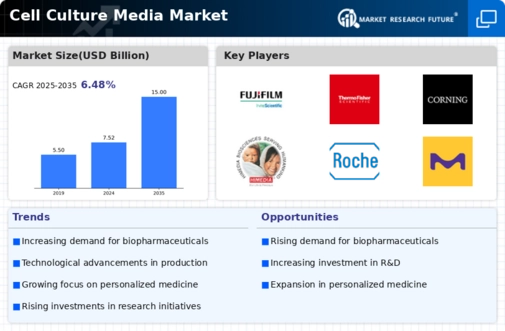
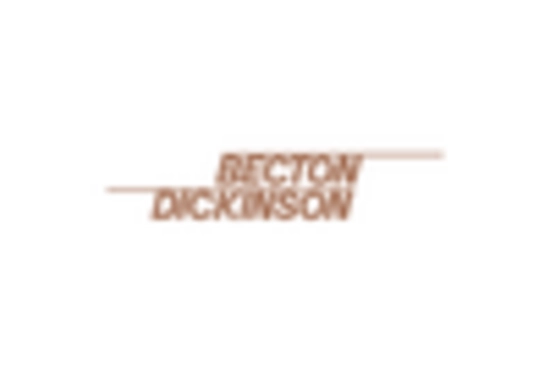
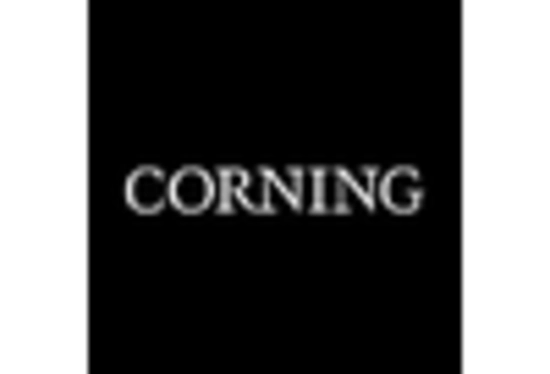

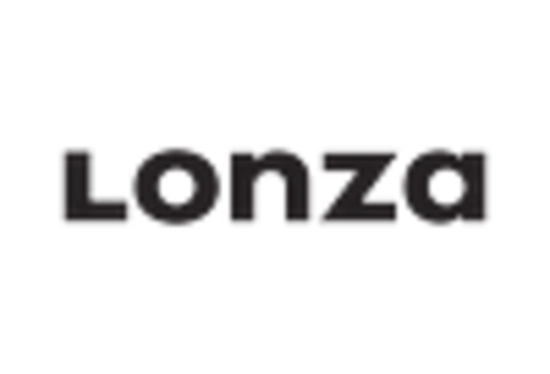



Leave a Comment